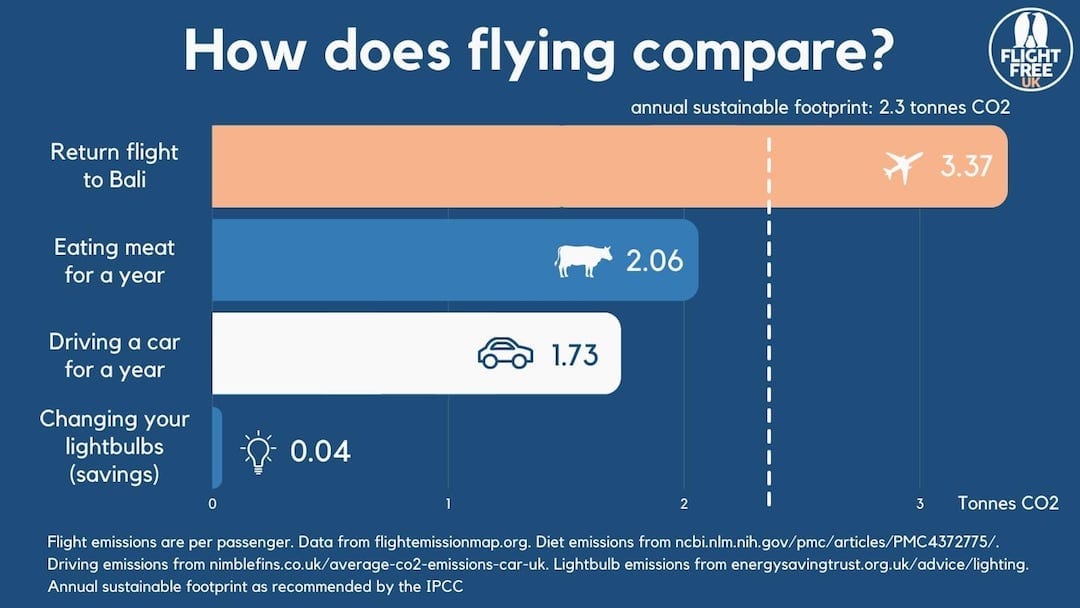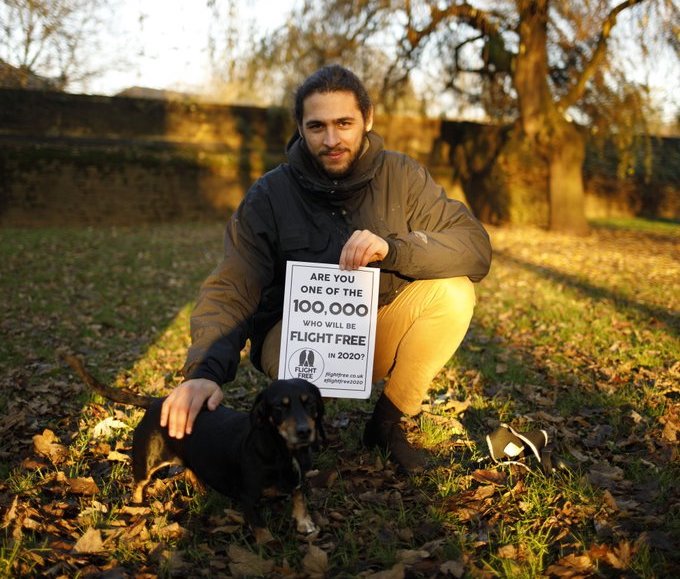Carbon offsetting is back.
It first emerged as a popular idea in the mid-noughties, especially after Al Gore’s documentary An Inconvenient Truth, with many airlines offering offsets to increasingly climate-conscious customers. In the following years, offsetting seemed to decline in visibility, but has recently made a resurgence as aviation emissions come under greater scrutiny. Airlines like Qantas, Lufthansa, KLM and Ryanair all offer their passengers the option of offsetting flights. BA and Easyjet now even pay for offsets on their customers’ behalf.
Offsetting offers the promise of making flights ‘carbon neutral’. But how exactly do offsets work, and can they be trusted?
What is carbon offsetting?
Let’s assume we can calculate how much carbon is emitted from a flight, or other activity, per person. Carbon offsetting means doing something to reduce that same amount of carbon from the atmosphere, so that in theory you have made that activity carbon neutral (or specifically, ‘net’ neutral). Reducing carbon can mean planting trees or using man-made technology to extract carbon or other greenhouse gases from the atmosphere. As we shall see there are also other, more questionable, methods too.
Carbon reduction projects cost money, meaning you pay extra for your flight. Somewhat confusingly, the cost can vary quite a bit, even for the same route. That’s because different offset providers calculate flight emissions differently, and fund different projects.
For an example, let’s take a return economy flight from London Heathrow to New York JFK. In the table below you can see how offset companies differ in their calculations of the pollution created, and the cost to offset it.

Why do the emissions and costs differ so much?
There are two main reasons. The calculations of emissions of a flight depend on a provider’s methodology. Non-carbon emissions which are created by aircraft – like water vapour, aerosols and nitrogen oxides – may or may not be factored in. Also, emissions at high altitude have a greater warming effect on the atmosphere than emissions at ground-level. So aviation emissions could have up to three times more warming effect – or ‘radiative forcing’, to use the jargon – than if they were carbon-only emissions at ground-level. But as the science is not completely clear, different providers can justify using different methodologies to generate high/low emission figures with corresponding expensive/cheap costs to the customer.
The second reason is that project costs vary hugely depending on location, the certification standard used, and the type of offset. Planting trees in, say, the UK, costs more than in Africa, so most projects will be in developing countries. Different certification standards – of which there are several – also carry different costs depending on how stringent they are. Generally speaking, the Voluntary Carbon Standard (VCS) – a recognised industry certification – is cheaper to adhere to than the Clean Development Mechanism (CDM), a certification derived from the United Nations’ Kyoto Protocol. In terms of project types, schemes which protect trees will be cheaper than ones which involve planting new ones or building new wind farms.
Can we trust offsets?
This is where offsets get contentious. There are three big problems with offsetting: time, ‘additionality’, and ethics.
Time-wise, a flight taking off today emits its carbon today. Waiting for trees to mature to the stage when they can remove that carbon takes many years or even decades – time which we may simply not have to spare in avoiding climate breakdown.
"Waiting for trees to mature takes many years – time which we may not have in avoiding climate breakdown."
Offsetting isn’t always effective, or ‘additional’. In other words, it’s hard to prove that projects that are supposed to absorb the emissions from your flight would not have happened anyway. If a project is already in operation can it really be labelled as an offset? This is especially true of projects which protect forests, where the trees would likely have survived without the project. And it is very possible that cookstove or renewable energy projects can attract funds without offset money. Researcher Dan Welch sums up the problem nicely: “offsets are an imaginary commodity created by deducting what you hope happens from what you guess would have happened”.
A recent EU report concluded that 85 per cent of CDM projects were unlikely to have been ‘additional’. The most reliable offsets studied weren’t photogenic ones like tree-planting, but industrial processes like capturing methane from landfill sites. Added to this, emerging negative emission technologies like that developed by Climeworks, who capture and store carbon directly from the air, are much quicker and more obviously ‘additional’ – but they are currently expensive and hard to scale-up.
Ethically, carbon offsets can seem like a way to avoid taking responsibility for our own behaviour: to avoid flight-shame without avoiding flights.
What else can we do?
Of course, not everyone can avoid all flights, and it’s understandable that people who ‘need’ a flight might also want to reduce its environmental harm. But perhaps we ought to view offset schemes as a well-intentioned kind of charity, not a scientific way to be ‘carbon neutral’. If the ultimate goal is to alleviate human suffering, perhaps donating to charities who help victims of climate-related disasters represents a more effective bang-per-buck.
The problems with offsetting outlined here are complicated, boring even, so people might happily accept industry PR telling them that offsets make their flight is ‘carbon neutral’. Early signs from Easyjet’s offset scheme suggest, worryingly, this may already be happening.
So beware of such claims, and remember that the single best way to reduce emissions from aviation remains the most simple one: fly less.
Roger Tyers is an environmental sociologist at the University of Southampton




